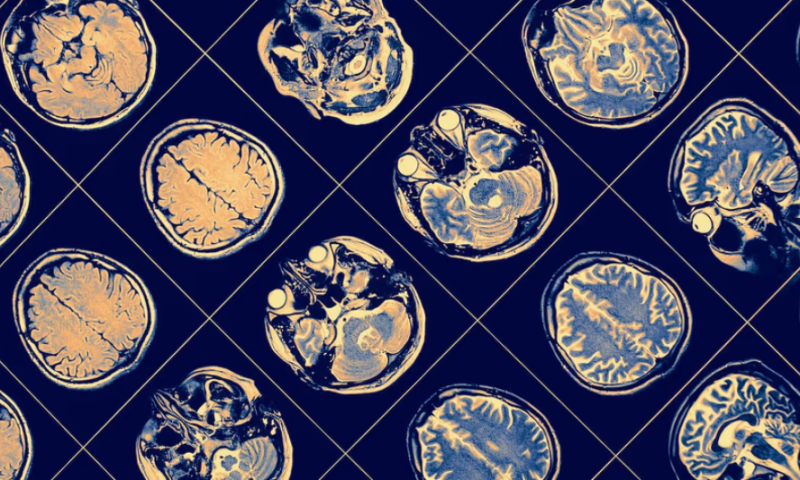Patients with Down syndrome face a lifetime of sensory, reproductive and intellectual disabilities that worsen with age. But despite affecting as many as 1 in 700 births, according to the Centers for Disease Control and Prevention, the mechanism behind the condition’s pathologies is poorly understood, and there are few effective treatments.
Now, a team of researchers from two French universities has found that the absence of gonadotropin-releasing hormone, or GnRH, could be driving many of the symptoms in people with Down syndrome. In a pilot study published Thursday in Science, they have shown that restoring it could improve cognitive performance.
“[Six months of] GnRH therapy induced unexpected changes in brain functional connectivity,” Vincent Prevot, Ph.D., co-corresponding author and a laboratory director at the Lille neuroscience and cognition center at Lille University Center, told Fierce Biotech in an e-mail. “This and the improvements of the cognitive performances of the patients were certainly the most striking results that surprised us.”
Leading up to the study, the researchers were intrigued by the fact that children with Down syndrome have olfactory and intellectual abilities on par with their peers until around puberty, when they begin to decline. They also knew that the chromosome impacted in Down syndrome, chromosome 21, included genes that had downstream effects on GnRH neurons and the expression of the hormone after birth.
With this in mind, Prevot’s lab set out to see whether there was any link between GnRH levels and cognitive decline. They ran a series of cognitive tests on prepubertal and young adult mice with a genetic anomaly that’s parallel to the one found in humans with Down syndrome. They found that not only did the mice have similar olfactory deficits to their human counterparts but that the trajectory of the mice’s memory skills mirrored them as well. Until puberty, the mice could tell if they were encountering a familiar or unfamiliar object, but they couldn’t by the time they reached young adulthood.
After ruling out inflammation and the presence of proteins linked with Alzheimer’s disease, the researchers next looked at brain tissue samples from the mice at different ages to see whether a gradual GnRH decrease mapped to memory decline. First, they noticed in wild-type mice that GnRH neurons were not only present near the hypothalamus but also that they projected to parts of the brain that control social and cognitive processes. They then found that these projections were the same between the two groups of mice at birth but that they began to decrease in the experimental group after puberty. By the time they were adults, the experimental mice had lost those projections.
This set up the next phase of research: a look at how gene expression influenced GnRH levels. The researchers knew from previous work that GnRH expression during infancy, or minipuberty, was regulated by several microRNAs that were encoded by genes on chromosome 21 in humans and its equivalent in mice. They found that the switch in the experimental group was altered as far back as infancy. This alteration led to aberrant expression of genes involved in myelination and synaptic transmission well beyond the hypothalamus, with particular impact on the hippocampus.
The team wondered whether overexpressing one of the most significantly impacted miRNA, miR-200b, in the hypothalamus would help. Indeed, it did. Overexpressing miR-200b in a subset of male mice restored their ability to both differentiate between smells and recognize new objects. It also increased the number of neurons expressing the gene for GnRH and improved gene expression and synaptic transmission in the hippocampus.
Knowing that the dysregulation in the genetic switch for GnRH could explain the gradual cognitive deficits, the team then sought to find out if restoring GnRH in the hypothalamus would reverse them. They turned to the lab of study co-correspondent and University of Lausanne professor Nelly Pitteloud, M.D. His research includes Kallmann syndrome—a rare genetic condition with symptoms that overlap with those in Down syndrome. One of the Kallmann syndrome treatments is pulsatile GnRH injections, or injections given in a way that mimics natural hormone production.
Researchers from the two labs treated the experimental mice with GnRH using the same protocol that’s used in Kallmann syndrome patients. The GnRH restored cognitive abilities in both male and female mice and the ability to smell in the males.
The team then set up a small pilot study, recruiting seven men with Down syndrome aged between 20 and 50, all of whom had intellectual disabilities. After undergoing cognitive performance tests and MRI scans, they were fitted with special pumps that secreted a dose of GnRH every two hours for six months.
The results were far beyond what the team had hoped: By the end of the trial, six of the patients showed cognitive improvements of around 20% to 30%. They were better able to understand instructions and had improved reasoning abilities, better episodic memory and greater attention, although their olfactory abilities were unchanged.
Just as surprising was the degree to which the subjects’ brain connectivity had changed. Comparing MRI scans from before and after treatment, the researchers found significantly increased signaling between visual and sensorimotor regions of the brain as well as lowered signaling between the hippocampus and amygdala—almost to the level of controls.
Although the work is promising, there’s much research to be done yet before GnRH therapy can be considered as a possible treatment for cognition in Down’s syndrome patients. The same team behind the study is launching a randomized, multicenter study in Switzerland this fall with 60 to 70 patients, a third of which will be female.

